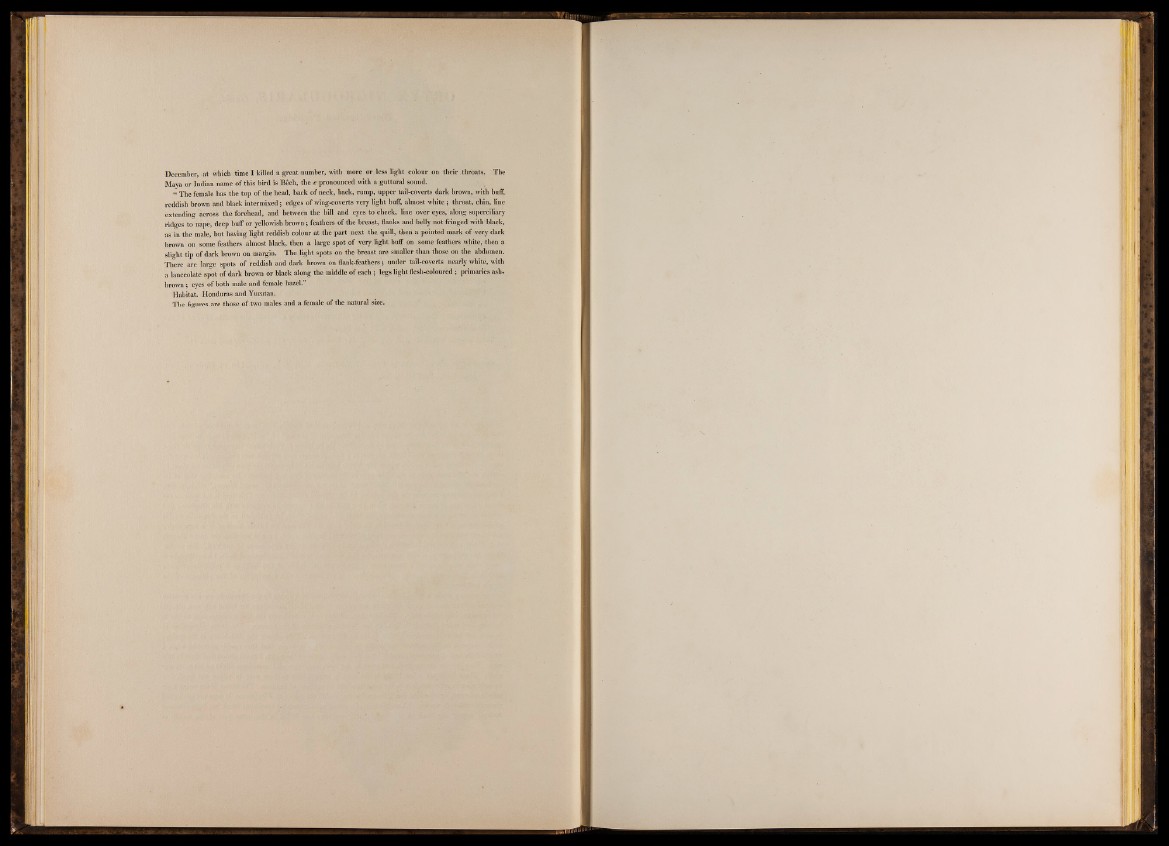
December, at which time I killed a great number, with more or less light colour on their throats. The
Maya or Indian name of this bird is Bech, the e pronounced with a guttural sound.
“ The female has the top of the head, back of neck, back, rump, upper tail-coverts dark brown, with buff,
reddish brown and black intermixed; edges of wing-coverts very light buff, almost white; throat, chin, line
extending across the forehead, and between the bill and eyes to cheek, line over eyes, along superciliary
ridges to nape, deep buff or yellowish brown; feathers of the breast, flanks and belly not fringed with black,
as in the male, but having light reddish colour at the part next the quill, then a pointed mark of very dark
brown on some feathers almost black, then a large spot of very light buff on some feathers white, then a
slight tip of dark brown on margin. The light spots on the breast are smaller than those on the abdomen.
There are large spots of reddish and dark brown on flank-feathers; under tail-coverts nearly white, with
a lanceolate spot of dark brown or black along the middle of each; legs light flesh-eoloured; primaries ash-
brown ; eyes of both male and female hazel.”
Habitat. Honduras and Yucatan.
The figures are those of two males and a female of the natural size.